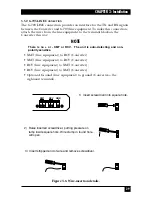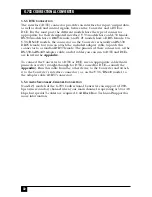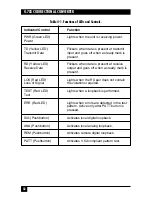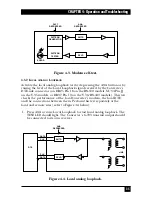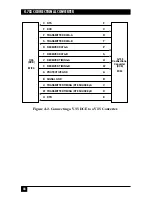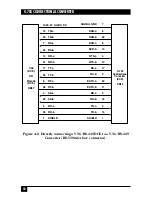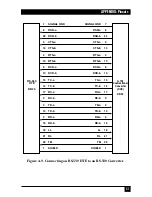
37
CHAPTER 4: Operation and Troubleshooting
Figure 4-4. Remote digital loopback.
3. If the BERT test indicates a fault, but both Converters pass their modem
self-tests (see
Section 4.3.1
), there is a problem somewhere in the
communication line between the units.
4. After the test is complete or the fault has been corrected, restore the
REM button to its normal position. Proceed with local digital loopback.
4.3.4 L
OCAL
D
IGITAL
L
OOPBACK
Activate the local digital loopback test by depressing the DIG button on the
Converter’s front panel. This test involves creating an outbound loopback at
the local Converter (see Figure 4-5 on the next page). It works the same way
as if the remote operator had initiated a remote digital loopback at the
remote site. With this test, the remote operator can check the performance of
the remote and local Converters and the lines between them:
1. Press DIG; the local Converter will signal the remote unit and will start
local digital loopback. The TEST LED should light on both units. The
local Converter’s G.703 receive input should be connected to its own
transmitter.
2. Perform a Bit Error Rate Test (BERT). Either:
• Hook up an external BERT unit in place of the remote DTE; or
• Use the remote Converter’s internal BERT. Press the PATT button.
The ERR LED should light briefly just to confirm that the LED is
working, and then the test will proceed. If errors are detected, the ERR
LED will be continuously lit (if the errors are continuous) or will blink
(for intermittent errors).
REM
DEPRESSED
DATA
CLK
RCVR
CLK
DATA
XMTR
LOCAL
DTE
XMTR
RCVR
REMOTE
DTE







